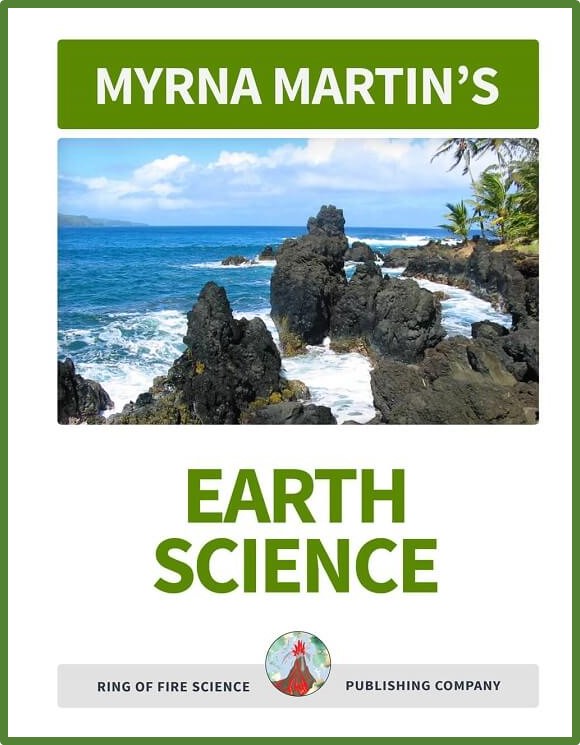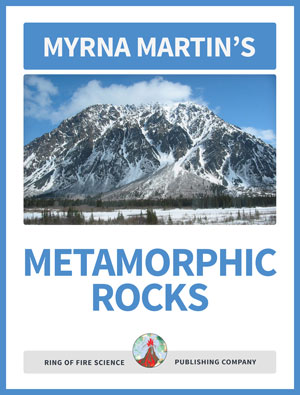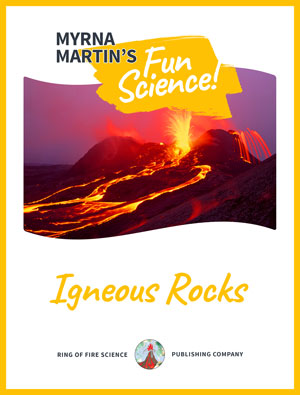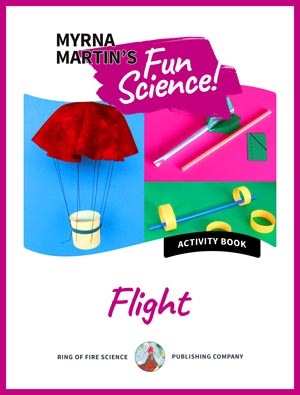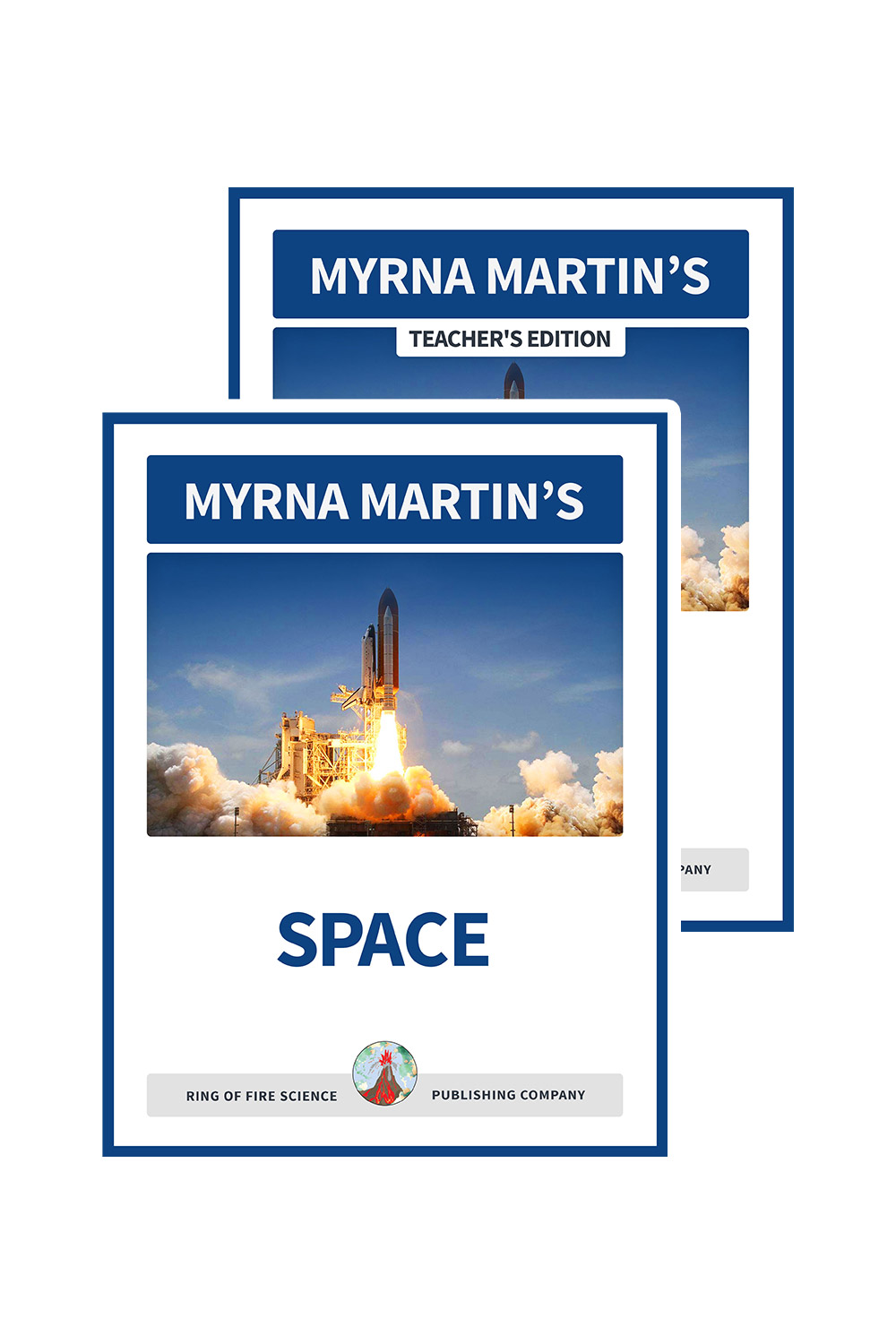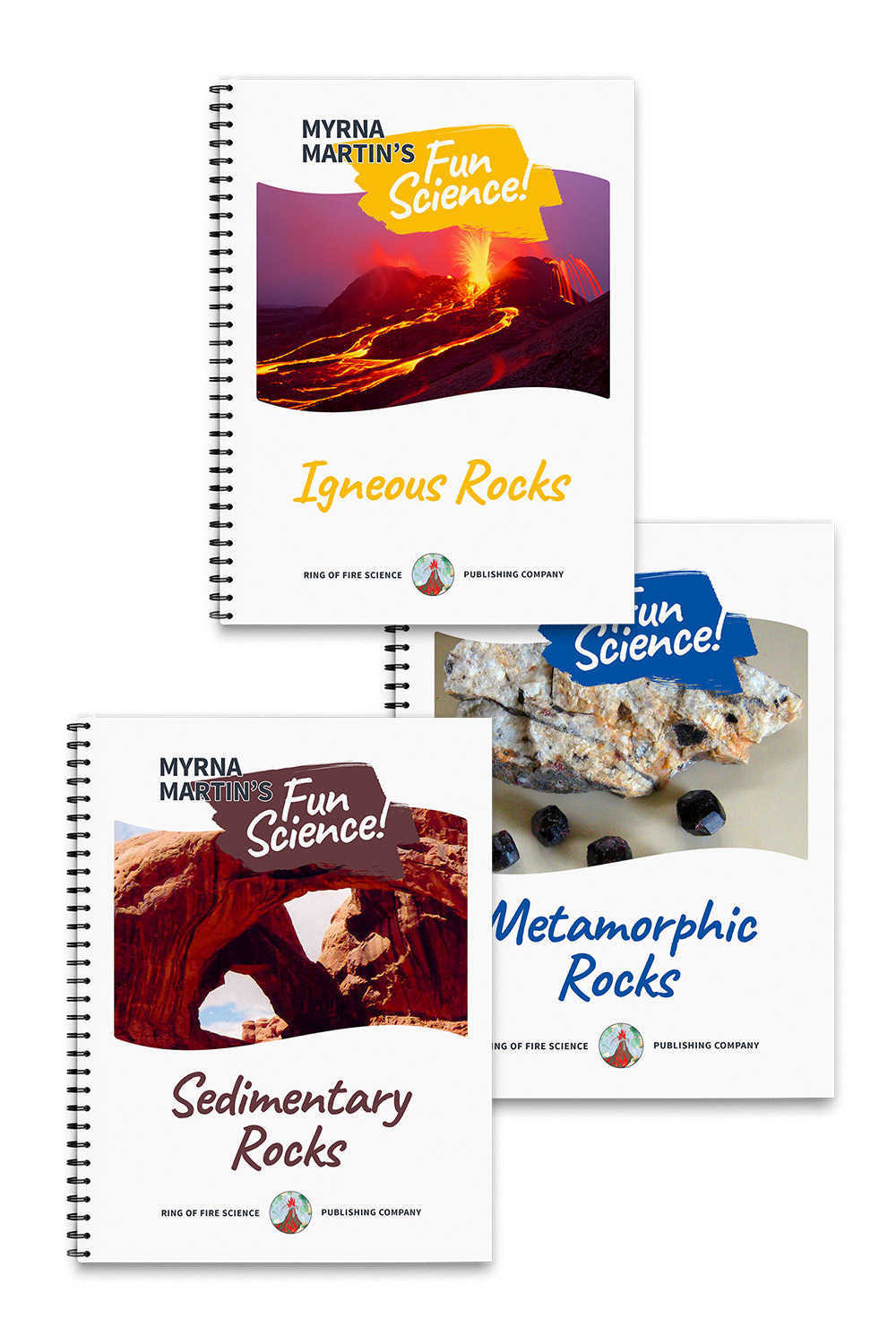Alaska Northern Lights
Alaska Northern Lights glow in the skies
Alaska Northern Lights are powered by the Sun. Magnetic storms occurring on the Sun send out a stream of electrons and protons that light up our skies at night. The electrons and protons are energy particles in the solar wind varies in temperature and speed as sunspots increase and decrease in the upper atmosphere of the Sun.
alaska Northern lights
2006 Picture of the Year
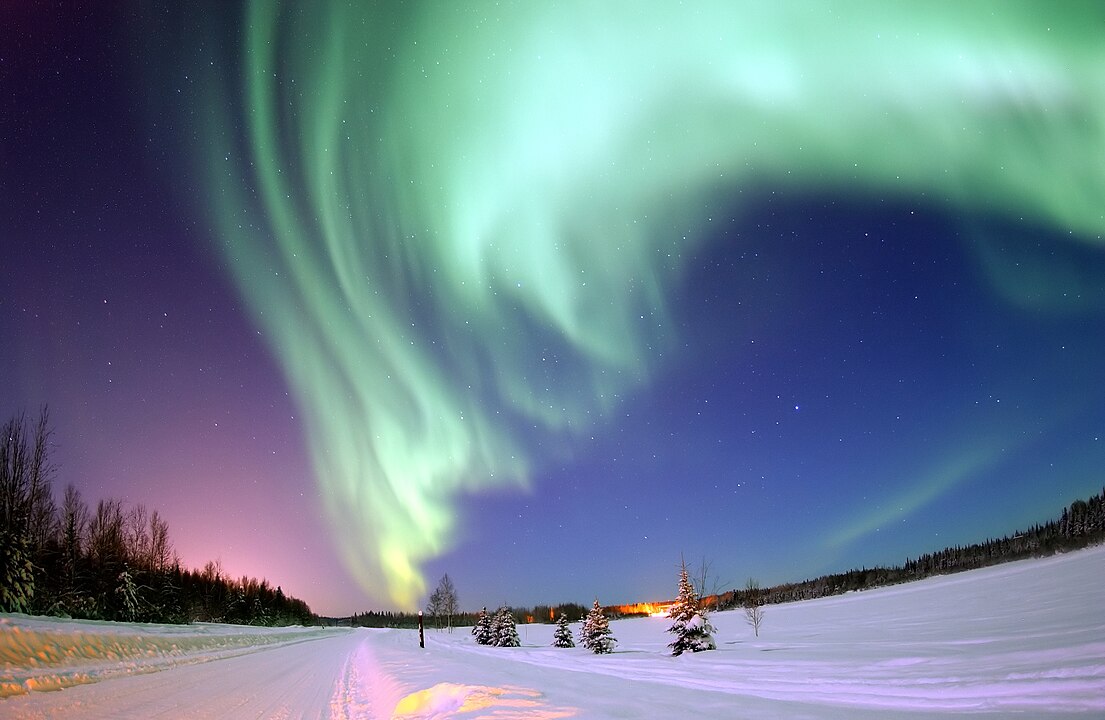
Bear Lake, Alaska
The Northern Lights shine above Bear Lake near Eielson Air Forece Base in Alaska. The photograph was taken by Senior Airman Joshua Strang. He is a member of the United States Air Force. The picture was honored as the Picture of the Year in 2006.
Ring of Fire Science textbooks
Our textbooks are easier to use than any other Earth Science program available. Each chapter contains an activity related to the topic of the chapter.

|
Our Earth Science books are designed for students to work through the lesson on their own with little to no help from their teacher. Answer Key is in the back of each book. The 16 Chapters in the book contains: Written information about Earth Science Hands-on science activity in each chapter Quiz on the written information |
Eleven year sunspot cycle
The sunspot cycle peaks every eleven years. During the peak of the cycle large magnetic storms occur on the Sun. The Sun ejects an increased number of electrons and protons from its upper atmosphere sending them streaming in all directions away from the Sun.
The solar wind takes two days to travel from the Sun to the Earth where it creates the Northern Lights as the solar wind passes the Earth.
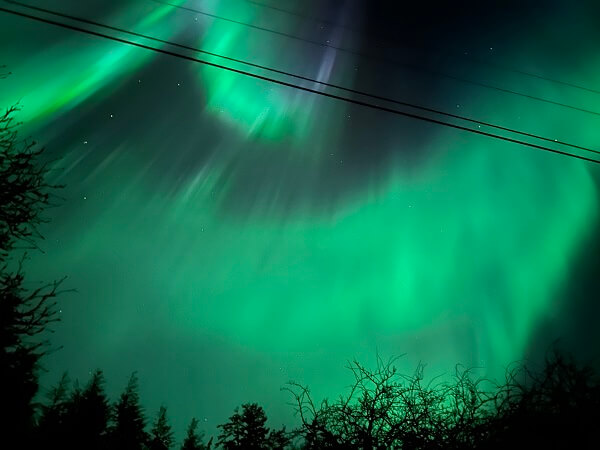
Northern Lights in the sky above Sitka, AK Anne Pollnow
Aurora Borealis is the Alaska Northern Lights
The Northern Lights are also known as the Aurora Borealis in the northern hemisphere. The Aurora Australius are called the Southern Lights in the southern hemisphere. The lights occur between 50 and 200 miles above the Earth in the Thermosphere.
The energy particles in the solar wind collide with atoms in the atmosphere. Radiation is emitted as light when this happens forming forming the Northern Lights
Click on the link to read more information the auroras.
https://en.wikivoyage.org/wiki/Main_Page
Type in Northern Lights in the search bar and it will take you the page on the Northern Lights.
Where you can see the aurora borealis?
Our family lives near the 45th parallel in the foothills of the Cascade Mountains. Our son Brett has seen the aurora borealis twice at his home near us.
Occasionally people have seen the auroras as far south as 35 degrees North latitude.
NOAA Alerts
If you are able to visit territory where the auroras might be sited you can improve your chance of seeing the lights for information on space weather by visiting NOAA. This site has space weather information. You might want to check the weather forecast to see if the weather is clear or cloudy.
Other places that monitor the auroras
The University of Alaska Fairbanks maintains an Aurora Alent website. The Finnish Meterorological Institute has an activity forecast in Finland. Icelandic MET office has a Northern Lights forecast for Iceland including predictions of cloud cover.
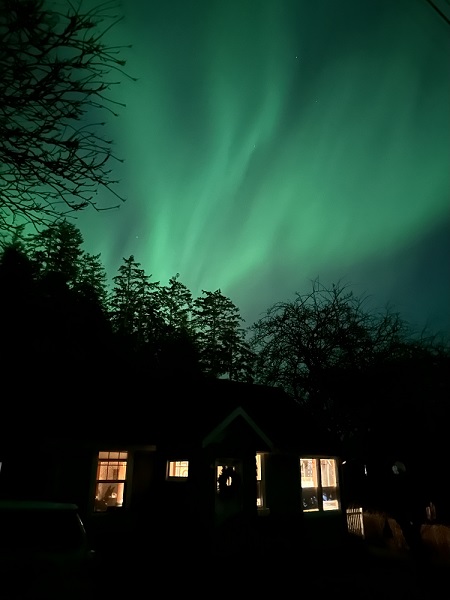
Northern Lights in Sitka, AK Anne Pollnow
Best months to watch the aurora borealis
The best time to see the Alaska Northern Lights is late at night or early in the morning. You should also try to go to some place when lights from the city will not affect the sky. The best months to observe the auroras are September, October, February and March.
Check when there is a new moon
Check your calendar for dates when there will be a new moon during one of these months. Look for glowing and dancing curtains of light in the sky on these days.
Common colors found lighting up the sky by the auroras are green, pink, yellow and orange. The most common color is green. Red is the rarest.
More Planet Earth Links
Mid-Atlantic Ridge Find out where the newest crust on our planet forms and which type of crust is the oldest.
Lithosphere is solid and brittle Earth's lithosphere is the outer shell of the planet. It contains both the crust and part of the upper mantle.
Earth has two cores Find out how scientists use earthquake waves to study the Earth's core.
Asthenosphere inside Earth Find out how scientists proved the existence of the asthenosphere after the Great Chilean Earthquake in 1960.
Earths Atmosphere Find out how the layers above Earth have formed and their importance to life on our planet.
Alaska Northern Lights Learn how and why the Northern Lights light up the sky in the Northern Hemisphere.
Planet Earth Find out about the different layers that make up planet earth from the core to outer space.
Plate Movements Do you know what are divergent plate boundaries, convergent boundaries and transform faults. Find out on this page.
Crustal Plates Crustal plates (tectonic plates) are the outer shell of the Earth. Find out how continental crust and oceanic crust forms on our planet
Tectonic Plate Boundaries Find out how and where tectonic plate boundaries form on our planet.
The Earth's Mantle Find out about the Earths mantle that contains 84% of the Earth's mass.
Home Page The Science Site contains information on our planet, volcanoes, science activities, earthquakes and much more.
Kids Fun sCIENCE bOOKSTORE
Check out Myrna Martin's award winning textbooks, e-books, videos and rock sets. The Kids Fun Science Bookstore covers a wide range of earth science topics. Click here to browse.
Sign up to our monthly newsletter and receive our FREE eBook containing 3 fun activities that don’t appear in any of our other books!
The Kids Fun Science monthly newsletter will include the following: current events, weird and fantastic facts, a question of the month, science trivia and the latest new content from our website.
We respect your privacy and you can be assured that we will never share your email address or use it for any other purpose than to send you our newsletter.


